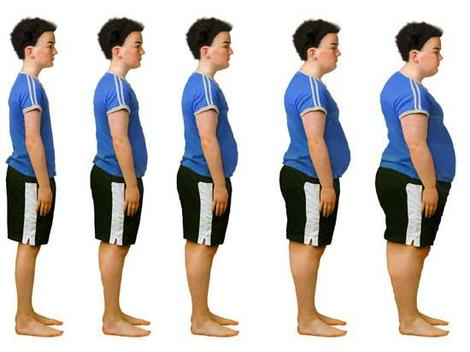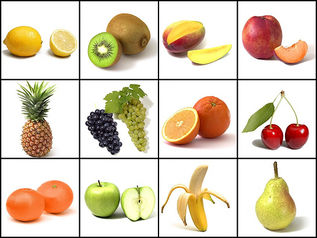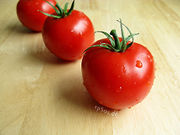User:Nivedita gopaul/My wikiproject
Contents
MY WIKI PROJECT
My wiki project on: Bad eating Habits and Obesity
INTRODUCTION
Bad eating habits are the 'abnormal' ways that people consume food, such as eating too much fatty foods. Consuming the wrong amount of food,needed by the body leads to obesity,For example, if a youngster takes too much sugar in his/her food, and only a few fruits and vegetables, it isconsidered as a bad habit, and, bad eating habits can cause obesity and various other diseases.
Bad Eating Habits and Obesity among children
Bad habits are as common in adults as in children. Children, being careless do eat whatever they want or get easily. This can eventually leads to developing, and adopting bad eating habits as part of their lifestyle. Children are more prone to eat fast foods, fatty and oily foods,soft drinks, snacks which are unhealthy for them, contrasting to a healthy diet,which, maintain or improve health. A healthy diet is important for the prevention of many chronic health risks, such as, obesity, heart disease, diabetes, cancer.It involves consuming appropriate amount of all nutrients, and an adequate amount of water. Children need to know about balance meals- what must be included in a balanced meal( food for energy, food for growth, food for health), and what they must not eat.
CAUSES OF BAD EATING HABITS
DIETARY
-Calorie rich drinks and foods are readily available to children.
-Consumption of sugar- laden soft drinks may contribute to childhood obesity.
-Calorie dense, prepared snacks are available in many locations.[In Mauritius, salty, oily cakes and dholl-puris are seen to be sold in all busy places-markets,streets,town]
-Eating at fast food restaurants is very common among young people in all industrialised countries, including Mauritius.
SEDENTARY LIFESTYLE
Physical inactivity of children has also shown to be a serious cause; childen who fail to engage in regular physical activity are at greater risk of obesity. Nowadays, most children spend their time watching films, playing games on computer, or playing play stations, which means that they lack physical exercises. Due to inactivity, unused energy in the body is stored as fats.
HOME ENVIRONMENT
Children's food choices are influenced by family meals. If main meals contain fatty fried foods, the child will get used to eating such types of foods, and, if there are lots of vegetables and fruits, the child will eventually like to eat them in the long run. Exposure of types of foods by parents play an immense role in the eating habits of children, because the latter tends to develop the eating habits that they 'see' and 'eat' everyday.
CONSEQUENCES OF BAD EATING HABITS
Bad eating habits can lead to obesity and life-threatening conditions such as diabetes, high blood pressure, heart diseases, sleep problems, cancer and other diseases. Studies show that overweight children are more likely to grow up to be overweight adults.
OBESITY
Obesity among children is a condition where excess body fat negatively affects a child's health and wellbeing. Obesity during adolescence has been found to increase mortality rates during adulthood. Obese children suffer from emotional and psychological disturbance; their peers often tease them. Stereotypes abound and may lead to low self esteem and depression.
Due to the rising prevalence of obesity in children and its many adverse health effects, it is being recognised as a serious public health concern.
The diagnosis of obesity is often based on Body Mass Index-BMI.
BMI is calculated =mass(kg)/ (height(m))2
Range of results:
| less than 16.5kg/m2 | severely underweight |
| 16.5-18.4kg/m2 | underweight |
| 18.5-24.9kg/m2 | normal |
| 25-29.9kg/m2 | overweight |
| 30-40kg/m2 | obese |
ACTIVITY:
Each adult is recommanded to calculate the BMI so that he/she can distinguish where he/she stands.
EXTERMINATE BAD EATING HABITS! ADOPT GOOD EATING HABITS!!!
How can we help children to adopt a healthy eating lifestyle?
-Have a healthy home food environment.
-Include children in planning, shopping, and preparation of meals.
-Have regular family meals; kids who eat with their families have lower levels of obesity.
-Eat fruits instead of junk foods.
-Eat baked foods instead of fried foods.-Be a role model and eat healthy yourself.
-Schedule regular meals and snacks, do not skip meals!
-Explain food choices to children.
-Remember to eat in moderation!
WORLD HEALTH RECOMMANDATIONS
The WORLD HEALTH ORGANISATION makes 5 recommandations with respect to population and individuals:
1 Achieve an energy balance and healthy weight.
2 Limit energy intake.
3 Increase consumption of fruits and vegetables, whole grains and nuts.
4 Limit intake of simple sugar.
5 Limit salt consumption.
Related article on bad eating habits.
en.mimi.hu>Diet.
www.wellsphere.com/wellpage/unhealthy-eating-habits
www.consistent-parenting-advice.com/healthy-eating-for-children.html
www.ayushveda.com/magazine/children-eating-habits/
THE ROLE OF THE EDUCATOR IN DEVELOPING GOOD EATING HABITS OF THE CHILDREN
A child spend most of the time in the school, from morning till late afternoon, hence, the educator is one of the person who live with the children the whole day. So, I think the educator is well placed to inculcate good eating habits to the young learners, so that they do not become victimes of obesity and other diseases in the future.
In Mauritius, Health Education has been included in the curriculum of the school syllabus at the primary level itself. The pupils' handbook is designed to provide learning experiences for pupils to attain, maintain and enhance their physical, mental and social-well beingbased on competencies spelt out in the National Curriculum Framework. Each handbook of different class level has an unit on 'My Food' which is mostly on balanced diet. healthy foods, unhealthy foods.
While carrying a lesson on 'What we must/not eat?, which is planned for 1 week, the educator tries to bring in lots of pictures to show pupils what they should eat and what food they should avoid. Pupils are involved in this activity. Pupils are welcomed if they have brought their own pictures. They are asked to make 2 big charts: one named-good eating habits, the other bad eating habits in red. Pupils stick pictures under the appropriate column. The charts are hanged on the classroom wall so that they could see it everyday.
Pupils are encouraged to bring a fruit each day to school, including salads for their lunch.
Strickly recommand pupils not to bring junk foods, salty or fried cakes in the classroom. Instead ask them to bring yoghurt and nuts that they can eat in the afternoon.
The educator reserves a particular time for physical activities(indoor or outdoor), for example, 30 mins thrice a week.
Discourage pupils to eat sweets, chewing gums, chocolates and drink soft drinks. They must be encouraged to drink lots of water or fruit juice.
Besides,in Mauritius, it is forbitten by law to sell junk foods, oily cakes, sugary foods and soft drinks in school premises.
Some learners are very eager, and they like to bring healthy lunch to schools; sharing of lunch among friends can encourage other pupils too.
Having lunch with the learners, the educator can give tips about healthy lifestyles, learners too will be encouraged to share their life experiences.
At the same time the educator can check 'who' is eating 'what',without letting the pupils know, and talk to the particular pupil alone so that he/she can change his/her bad eating habits.
Encourage pupils to wash hands before eating, not to let their lunch uncovered,or in the sun, or on the floor. Pupils must know how to keep their lunch free from mosquitoes, and dust.
Charts can be put on the wall to let pupils see what is obesity, and what do happen if someone is obese. They must be aware of the consequences of bad eating habits so that they don't do it.
A nutritionist can come to school to demonstrate some preparation that children like to eat, for example, while preparing spaghetti, several vegetables, such as carrots, beans, maize, peas can be included in the meal to make it nutritious. Pupils must be discouraged to eat fast foods, such as pizzas and chicken burgers.
CONCLUSION
Well, by writing my wiki project on this particular topic, I wanted to make all that read it to try to change their eating habits(if not good) and also to inculcate good eating habits to the youngs of today, so that they have a healthy and happy future awaiting them. Not only educators, but parents, colleagues,friends can try to inculcate good eating habits and decrease the rate of obesity among children.
PREVENTION IS BETTER THAN CURE!!!!




